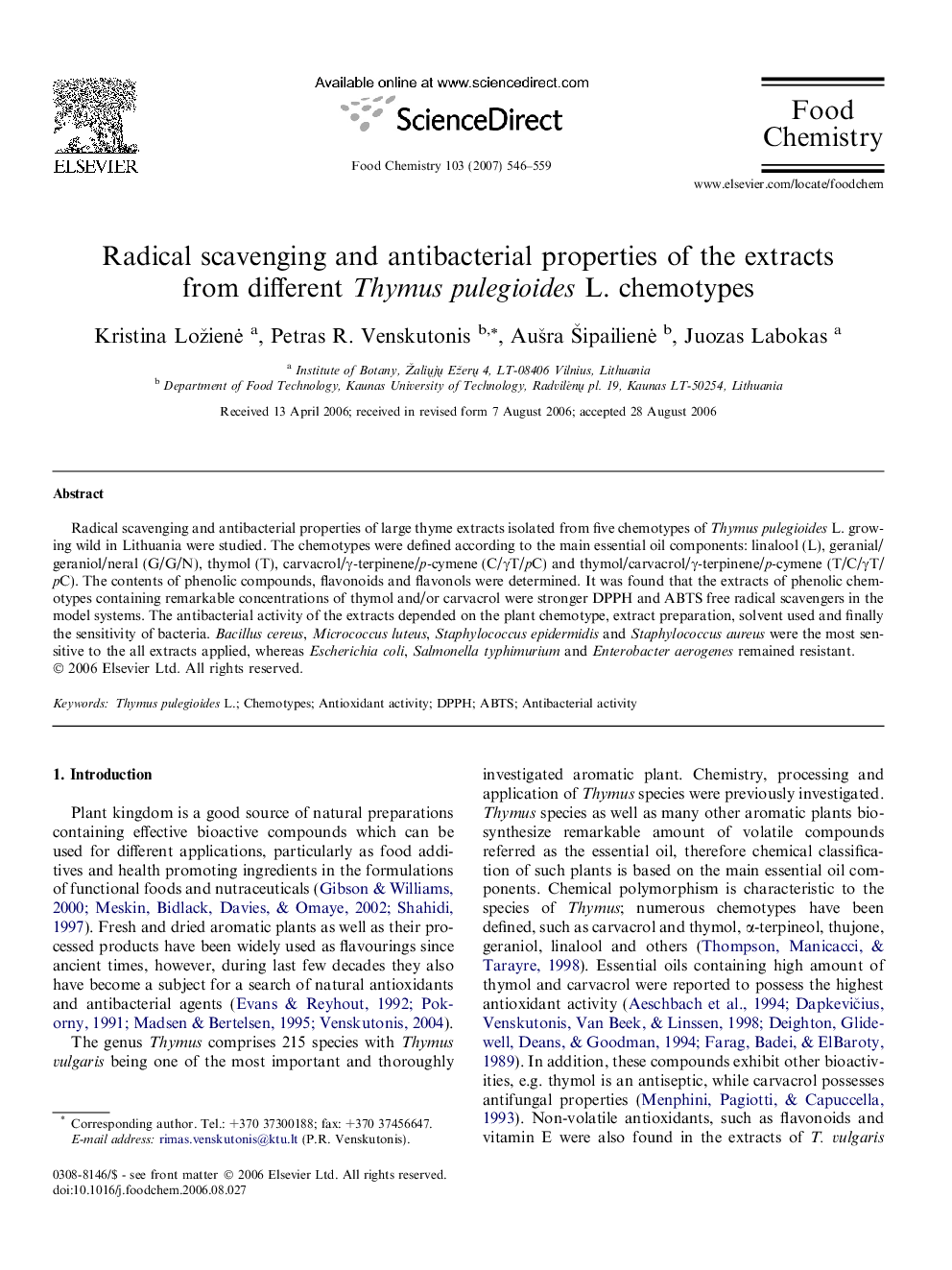| Article ID | Journal | Published Year | Pages | File Type |
|---|---|---|---|---|
| 1190621 | Food Chemistry | 2007 | 14 Pages |
Radical scavenging and antibacterial properties of large thyme extracts isolated from five chemotypes of Thymus pulegioides L. growing wild in Lithuania were studied. The chemotypes were defined according to the main essential oil components: linalool (L), geranial/geraniol/neral (G/G/N), thymol (T), carvacrol/γ-terpinene/p-cymene (C/γT/pC) and thymol/carvacrol/γ-terpinene/p-cymene (T/C/γT/pC). The contents of phenolic compounds, flavonoids and flavonols were determined. It was found that the extracts of phenolic chemotypes containing remarkable concentrations of thymol and/or carvacrol were stronger DPPH and ABTS free radical scavengers in the model systems. The antibacterial activity of the extracts depended on the plant chemotype, extract preparation, solvent used and finally the sensitivity of bacteria. Bacillus cereus, Micrococcus luteus, Staphylococcus epidermidis and Staphylococcus aureus were the most sensitive to the all extracts applied, whereas Escherichia coli, Salmonella typhimurium and Enterobacter aerogenes remained resistant.
